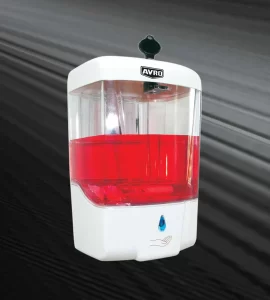
Proper kitchen ventilation is essential for keeping air in the kitchen clean and at a comfortable temperature. Not only does this reduce the risk of overheating, but it also makes cooking more comfortable. When a kitchen is poorly ventilated, it can create a hazardous situation due to gases, smoke, and steam. Kitchen ventilation systems include vent hoods and exhaust systems.
Proper ventilation in a kitchen keeps air clean and free from odors. It also helps reduce indoor air pollution. Proper ventilation also improves the efficiency of kitchen workers and helps regulate the temperature in the kitchen. Proper ventilation also improves the air quality in the entire home. If your kitchen is not properly ventilated, you may be at risk of carbon monoxide buildup and even fire.
There are two basic types of kitchen ventilation systems: updraft and downdraft. Updraft systems push air upward from the cooking area, while downdraft systems move the air downward. Updraft systems are more efficient and less intrusive than downdraft systems. Depending on the area of your kitchen, the updraft system may be best for your needs.
Proper kitchen ventilation improves air quality and complies with food safety laws. It also reduces employee irritation due to cooking fumes. Proper ventilation is also important to prevent excessive buildup of air-bore particles. This ensures a healthy working environment. The importance of kitchen ventilation cannot be overstated.
Kitchen ventilation systems can also help reduce energy loss and improve air circulation. Proper air circulation will reduce the risk of a fire, which is a significant source of heat and energy bills. A good exhaust system will remove hot air, cool air, and moisture from the kitchen and expel it via a ductwork system.
Proper ventilation will help minimize the growth of harmful bacteria and mould in your kitchen. Poor kitchen ventilation can lead to discoloration of walls and cause other health issues. Moreover, a poorly ventilated kitchen will be harder to clean. It can also lead to the growth of mould and mildew, which are unwanted byproducts of cooking.
Proper ventilation is essential for the health and comfort of workers in the kitchen. Proper kitchen ventilation will ensure that the air in the kitchen is healthy and free of odours. By ensuring proper air circulation, a good ventilation system can make cooking more efficient. If you’re considering installing a kitchen ventilation system, consider the following tips:
The first step in improving the air quality in your kitchen is to install a kitchen exhaust system. Although this is not a legal requirement in California, a kitchen exhaust system will greatly reduce air pollution in your home. A range hood, which is generally placed over the stove, can be another good kitchen ventilation option. It uses a motorized fan to suck up air pollution that comes with cooking. If installed properly, a range hood can keep the entire kitchen sanitary.
Proper kitchen ventilation is important in many aspects of your kitchen. Without adequate ventilation, cooking can become a miserable experience. The heat and moisture generated by food preparation produces a high temperature that can harm the walls. Additionally, the humidity in the kitchen can lead to the growth of mold and bacteria. Grease can also cling to the cabinets, which can attract unwelcome critters. Proper kitchen ventilation also helps to keep your kitchen appliances clean and extend their lifespan.








